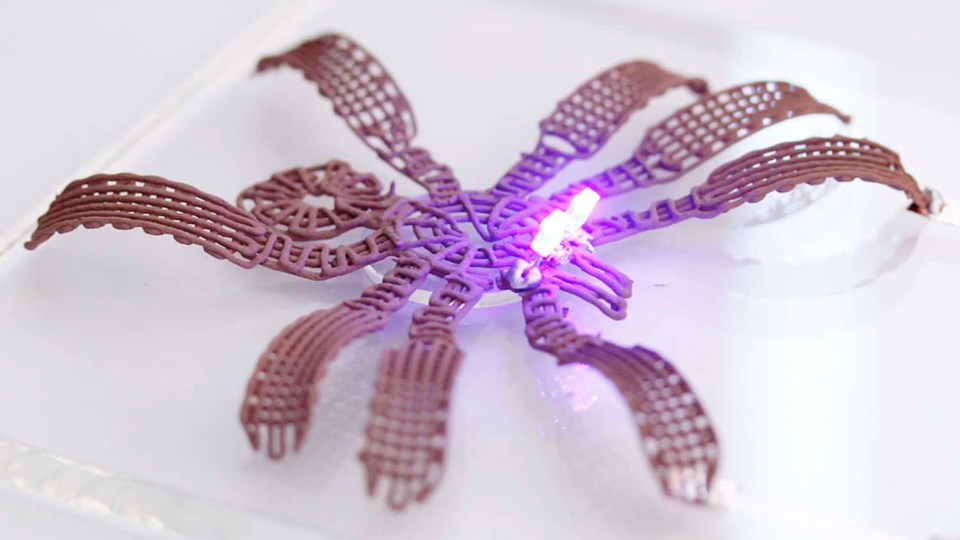North Carolina State University researchers have developed a metallic gel that is highly electrically conductive and can be used to print three-dimensional solid objects at room temperature.
In a paper published in the journal Matter, the scientists say that this is the first time a metallic 3D object is printed at room temperature.
To create the gel, the researchers started with a solution of micron-scale copper particles suspended in water. They then added a small amount of an indium-gallium alloy, which is a liquid metal at room temperature. The resulting mixture was then stirred together.
As the mixture was stirred, the liquid metal and copper particles stuck to each other, forming a metallic gel “network” within the aqueous solution.
“This gel-like consistency is important because it means you have a fairly uniform distribution of copper particles throughout the material,” Michael Dickey, co-corresponding author of a paper, said in a media statement. “This does two things. First, it means the network of particles connects to form electrical pathways. And second, it means that the copper particles aren’t settling out of solution and clogging the printer.”
The resulting gel can be printed using a conventional 3D printing nozzle and retains its shape when printed. When allowed to dry at room temperature, the resulting 3D object becomes even more solid while retaining its shape.
However, if users decide to apply heat to the printed object while it is drying, some interesting things can happen. The NC State University group found that the alignment of the particles influences how the material dries.
For example, if a cylindrical object is printed, the sides would contract more than the top and bottom as it dries. If something is drying at room temperature, the process is sufficiently slow that it doesn’t create structural change in the object. Yet, if heat is applied, rapid drying can cause structural deformation. Because this deformation is predictable, that means it is possible to make a printed object change shape after it is printed by controlling its pattern and the amount of heat the object is exposed to while drying.
“Ultimately, this sort of four-dimensional printing—the traditional three dimensions, plus time—is one more tool that can be used to create structures with the desired dimensions,” Dickey said. “But what we find most exciting about this material is its conductivity.”
The researcher explained that since objects printed using this technique end up being as much as 97.5% metal, they are highly conductive and even though they won’t be as conductive as conventional copper wire, they’d still be far more conductive than anything else that can be printed.
“We’re pretty excited about the applications here,” Dickey said. “We’re open to working with industry partners to explore potential applications, and are always happy to talk with potential collaborators about future directions for research.”



